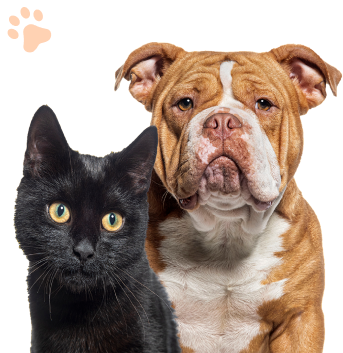



Pets communicate in many ways, but their body language is one of the most important. Learning to interpret their gestures, postures, and expressions can help strengthen your bond and ensure their well-being. Whether you have a dog, cat, or another pet, here’s what their body language may be telling you.
Dogs express emotions through their tails, ears, posture, and facial expressions. Here’s how to decode their signals:
Wagging tail (loose, mid-level): A happy and friendly dog.
High, stiff wagging tail: Excitement, but can also indicate dominance.
Low or tucked tail: Fear, anxiety, or submission.
Tail between legs with body lowered: Extreme fear or discomfort.
Perked-up ears: Alertness or interest.
Flattened ears: Fear, submission, or anxiety.
Soft, blinking eyes: Trust and affection.
Wide eyes with whites showing (whale eye): Stress, fear, or discomfort.
Relaxed body with loose movements: A content and happy dog.
Stiff posture with raised hackles: Aggression or fear.
Cowering or belly up: Submission, fear, or asking for reassurance.
Play bow (front paws down, rear end up): An invitation to play.
Cats can be mysterious, but their body language provides insight into their emotions.
Upright tail with slight curl at tip: A happy and friendly cat.
Puffed-up tail: Fear or aggression.
Slowly swishing tail: Mild irritation or focus.
Rapid tail flicking: Annoyance or overstimulation.
Forward ears: Curiosity and relaxation.
Flattened ears: Fear, irritation, or aggression.
Slow blinking: A sign of trust and affection.
Dilated pupils: Excitement, fear, or playfulness.
Arched back with fur standing up: Fear or aggression.
Rolling onto back, exposing belly: Trust, but not necessarily an invitation for belly rubs.
Kneading paws: Comfort and contentment.
Purring: Happiness, though some cats purr when in pain for self-soothing.
Other pets, like rabbits, guinea pigs, and birds, also have distinct body language cues.
Binky (jumping and twisting in the air): Pure joy and excitement.
Flattened body with wide eyes: Fear or submission.
Thumping hind legs: Warning signal or distress.
Popcorning (jumping in the air repeatedly): Happiness and excitement.
Teeth chattering: Irritation or warning.
Purring (low pitch): Contentment.
Fluffed-up feathers: Comfort or, if excessive, illness.
Head bobbing: Excitement or hunger.
Tail wagging: Happiness or contentment.
Beak grinding: Relaxation and comfort.
Respect their signals: If a pet seems anxious or fearful, give them space.
Reinforce positive behavior: Reward relaxed and happy body language with treats and affection.
Avoid punishment for fear-based reactions: Instead, use positive reinforcement and training.
Learn their individual quirks: Every pet is unique and may have personalized ways of communicating.
Understanding your pet’s body language helps create a stronger, more trusting relationship. By observing their signals and responding appropriately, you can ensure their comfort and happiness while deepening your bond. Pay attention to the small details, and over time, you’ll become fluent in your pet’s unique way of communicating!
Welcome to Pet Buzz Digest – Where Love Meets Paws! 